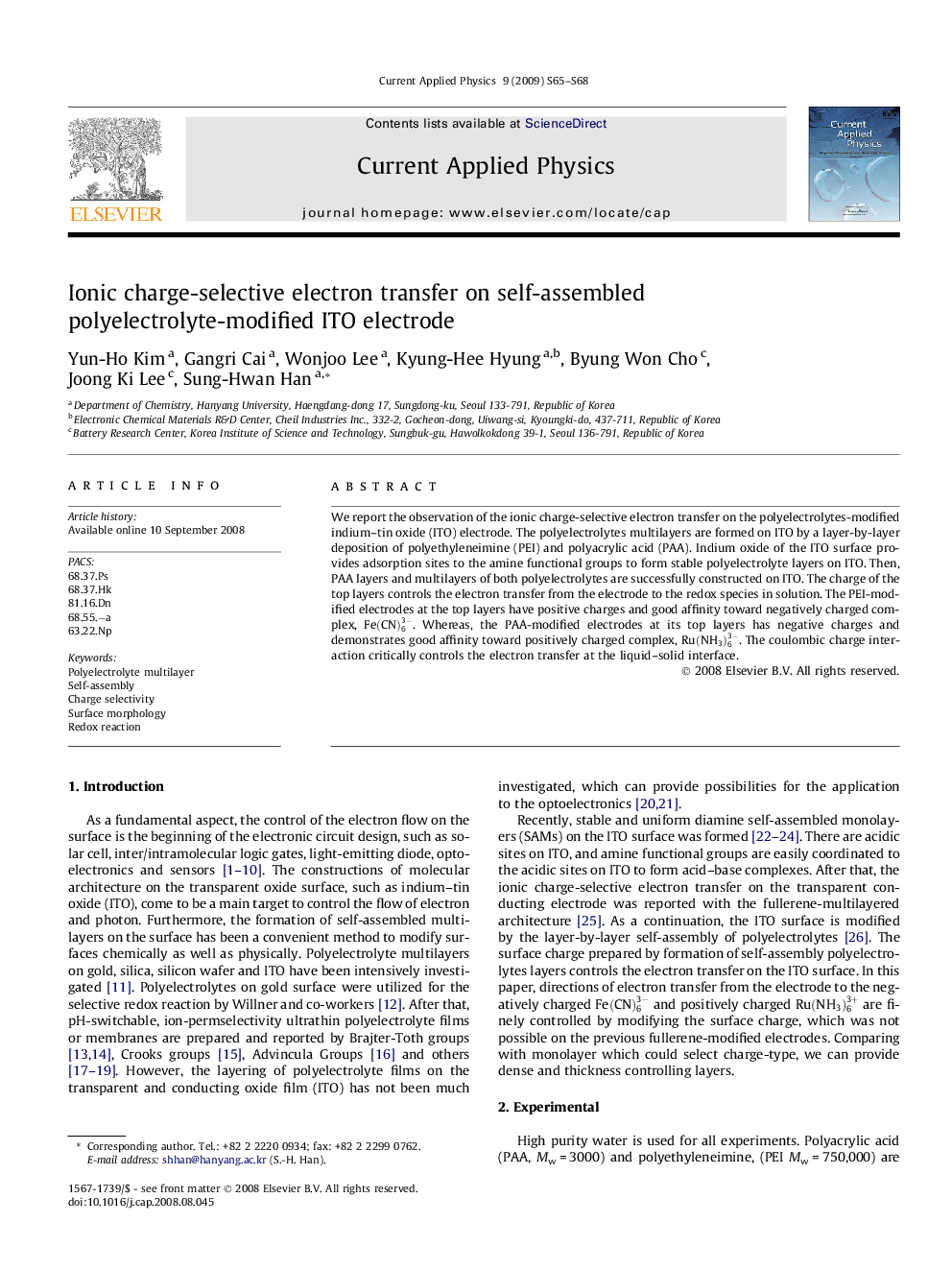| Article ID | Journal | Published Year | Pages | File Type |
|---|---|---|---|---|
| 1788956 | Current Applied Physics | 2009 | 4 Pages |
We report the observation of the ionic charge-selective electron transfer on the polyelectrolytes-modified indium–tin oxide (ITO) electrode. The polyelectrolytes multilayers are formed on ITO by a layer-by-layer deposition of polyethyleneimine (PEI) and polyacrylic acid (PAA). Indium oxide of the ITO surface provides adsorption sites to the amine functional groups to form stable polyelectrolyte layers on ITO. Then, PAA layers and multilayers of both polyelectrolytes are successfully constructed on ITO. The charge of the top layers controls the electron transfer from the electrode to the redox species in solution. The PEI-modified electrodes at the top layers have positive charges and good affinity toward negatively charged complex, Fe(CN)63−. Whereas, the PAA-modified electrodes at its top layers has negative charges and demonstrates good affinity toward positively charged complex, Ru(NH3)63−. The coulombic charge interaction critically controls the electron transfer at the liquid–solid interface.
